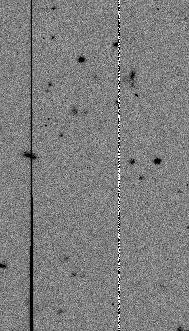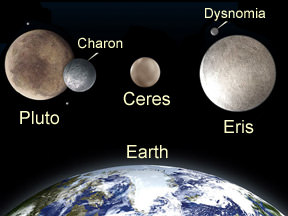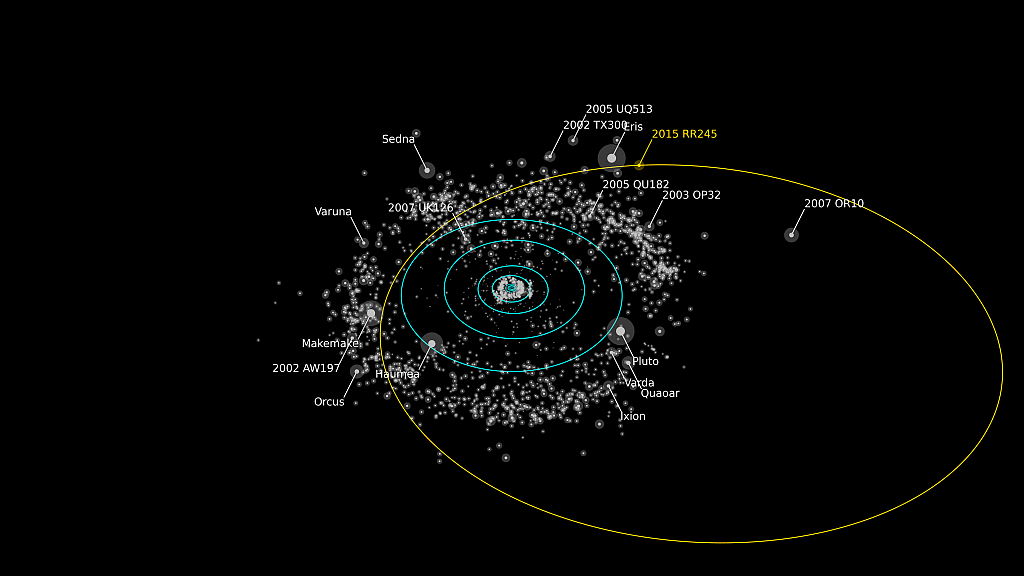A new dwarf planet has been discovered beyond Neptune, in the disk of small icy worlds that resides there. The planet was discovered by an international team of astronomers as part of the Outer Solar Systems Origins Survey (OSSOS). The instrument that found it was the Canada-France Hawaii Telescope at Maunakea, Hawaii.
The planet is about 700 km in size, and has been given the name 2015 RR245. It was first sighted by Dr. JJ Kavelaars, of the National Research Council of Canada, in images taken in 2015. Dwarf planets are notoriously difficult to spot, but they’re important pieces of the puzzle in tracing the evolution of our Solar System.
Dr. Michele Bannister, of the University of Victoria in British Columbia, describes the moment when the planet was discovered: “There it was on the screen— this dot of light moving so slowly that it had to be at least twice as far as Neptune from the Sun.”

“The icy worlds beyond Neptune trace how the giant planets formed and then moved out from the Sun. They let us piece together the history of our Solar System. But almost all of these icy worlds are painfully small and faint: it’s really exciting to find one that’s large and bright enough that we can study it in detail.” said Bannister.
As the New Horizons mission has shown us, these far-flung, cold bodies can have exotic features in their geological landscapes. Where once Pluto, king of the dwarf planets, was thought to be a frozen body locked in time, New Horizons revealed it to be a much more dynamic place. The same may be true of RR245, but for now, not much is known about it.
The 700 km size number is really just a guess at this point. More measurements will need to be taken of its surface properties to verify its size. “It’s either small and shiny, or large and dull.” said Bannister.
As our Solar System evolved, most dwarf planets like RR245 were destroyed in collisions, or else flung out into deep space by gravitational interactions as the gas giants migrated to their current positions. RR245 is one of the few that have survived. It now spends its time the same way other dwarf planets like Pluto and Eris do, among the tens of thousands of small bodies that orbit the sun beyond Neptune.
RR245 has not been observed for long, so much of what’s known about its orbit will be refined by further observation. But at this point it appears to have a 700 year orbit around the Sun. And it looks like for at least the last 100 million years it has travelled its current, highly elliptical orbit. For hundreds of years, it has been further than 12 billion km (80 AU)from the Sun, but by 2096 it should come within 5 billion km (34 AU) of the Sun.
The discovery of RR 245 came as a bit of a surprise to the OSSOS team, as that’s not their primary role. “OSSOS was designed to map the orbital structure of the outer Solar System to decipher its history,” said Prof. Brett Gladman of the University of British Columbia in Vancouver. “While not designed to efficiently detect dwarf planets, we’re delighted to have found one on such an interesting orbit”.
OSSOS has discovered over 500 hundred trans-Neptunian objects, but this is the first dwarf planet it’s found. “OSSOS is only possible due to the exceptional observing capabilities of the Canada-France-Hawaii Telescope. CFHT is located at one of the best optical observing locations on Earth, is equipped with an enormous wide-field imager, and can quickly adapt its observing each night to new discoveries we make. This facility is truly world leading.” said Gladman.

A lot of work has been done to find dwarf planets in the far reaches of our Solar System. It may be that RR 245 is the last one we find. If there are any more out there, they may have to wait until larger and more powerful telescopes become available. In the mid-2020’s, the Large Synoptic Survey Telescope (LSST) will come on-line in Chile. That ‘scope features a 3200 megapixel camera, and each image it captures will be the size of 40 full Moons. It’ll be hard for any remaining dwarf planets to hide from that kind of imaging power.
As for RR 245’s rather uninspiring name, it will have to do for a while. But as the discoverers of the new dwarf planet, the OSSOS team will get to submit their preferred name for the planet. After that, it’s up the International Astronomical Union (IAU) to settle on one.
What do you think? If this is indeed the last dwarf planet to be found in our Solar System what should we call it?

